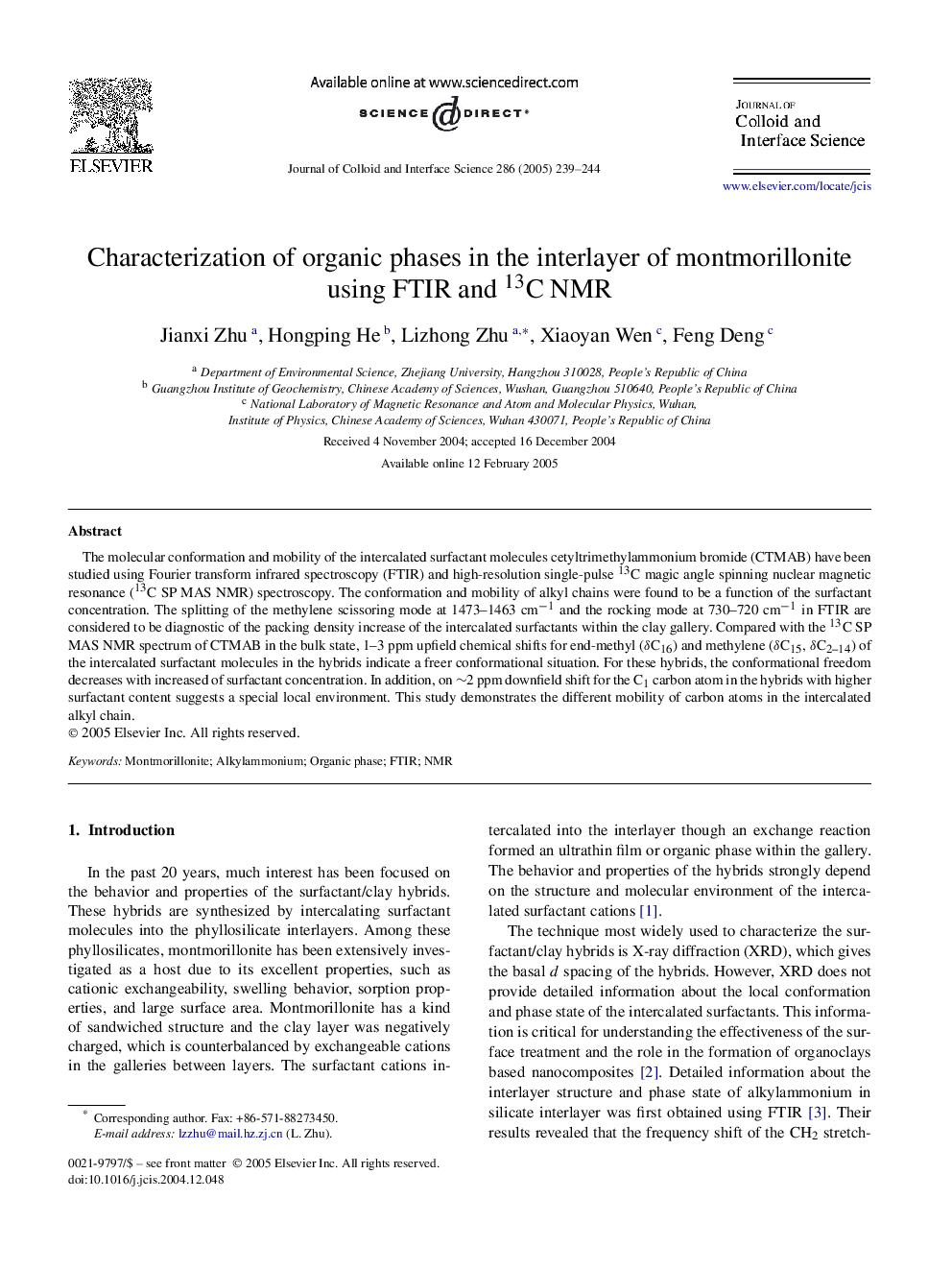| Article ID | Journal | Published Year | Pages | File Type |
|---|---|---|---|---|
| 10377694 | Journal of Colloid and Interface Science | 2005 | 6 Pages |
Abstract
The molecular conformation and mobility of the intercalated surfactant molecules cetyltrimethylammonium bromide (CTMAB) have been studied using Fourier transform infrared spectroscopy (FTIR) and high-resolution single-pulse 13C magic angle spinning nuclear magnetic resonance (13C SP MAS NMR) spectroscopy. The conformation and mobility of alkyl chains were found to be a function of the surfactant concentration. The splitting of the methylene scissoring mode at 1473-1463 cmâ1 and the rocking mode at 730-720 cmâ1 in FTIR are considered to be diagnostic of the packing density increase of the intercalated surfactants within the clay gallery. Compared with the 13C SP MAS NMR spectrum of CTMAB in the bulk state, 1-3 ppm upfield chemical shifts for end-methyl (δC16) and methylene (δC15, δC2-14) of the intercalated surfactant molecules in the hybrids indicate a freer conformational situation. For these hybrids, the conformational freedom decreases with increased of surfactant concentration. In addition, on â¼2 ppm downfield shift for the C1 carbon atom in the hybrids with higher surfactant content suggests a special local environment. This study demonstrates the different mobility of carbon atoms in the intercalated alkyl chain.
Related Topics
Physical Sciences and Engineering
Chemical Engineering
Colloid and Surface Chemistry
Authors
Jianxi Zhu, Hongping He, Lizhong Zhu, Xiaoyan Wen, Feng Deng,
